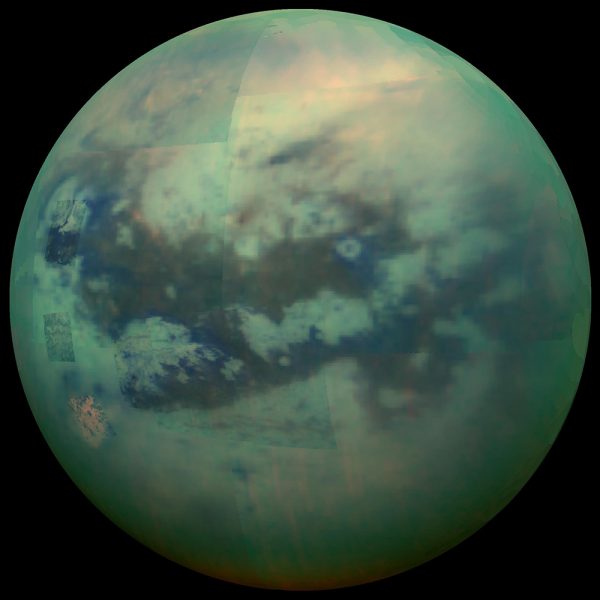Saturn’s largest moon Titan has a thick N2-rich atmosphere and lakes and seas of liquid CH4 on the surface. ELSI’s Eito Hirai, a PhD student and Yasuhito Sekine, Professor, et al. suggest that 100-micrometre-sized organic sands that form dunes on Titan may have been generated by rapid aggregation of tiny organic aerosols upon rainfall and evaporation of liquid CH4. This study suggests a new formation mechanism of “sand” via aggregation of very fine aerosols on planetary bodies – meanwhile, sands on Earth are formed by the mechanical destruction of large rocks – which will be revealed by NASA’s DragonFly mission to Titan.

Titan, Saturn’s largest satellite, has a thick N2 atmosphere, where organic aerosols are produced by photochemical reactions. There are oceans and lakes of liquid CH4 on the surface, and the equatorial region is covered with sand dunes that would be composed of organic material (Figure 1). Meanwhile, the landform of Titan’s dunes resembles Earth’s, the origin of the organic sand particles on Titan is largely unknown. Organic aerosols may fall to the surface and become sand, but aerosols are about 100 nanometers (one ten-thousandth of a millimetre) in size. In contrast, sand particles are about 100 micrometres (one-tenth of a millimetre) in size. If organic aerosols are the size of a marble, sand particles are about the size of a five-story building.
To solve the mystery of how Titan’s sand is made, the research group focused on rainfall and evaporation of liquid CH4. On Titan, sand dunes are seasonally subject to rainfall and evaporation of liquid CH4. The research group developed an experimental apparatus to reproduce rainfall and evaporation on Titan. They found that liquid CH4 collects aerosols, and when it evaporates, the dissolved components from the aerosols stick together like glue to form large aggregate particles rapidly.
Sand particles usually form on Earth, Mars, and asteroids when large rocks are destroyed due to temperature changes and water penetration. On the other hand, on Titan, numerous aerosol particles may stick together into large sand particles due to liquid CH4. NASA plans to explore Titan using a drone in the mid-2030s, so the predictions of this study can be verified by future exploration.
| Journal | Geophysical Research Letters |
| Title of the paper | Rapid Aggregation and Dissolution of Organic Aerosols in Liquid Methane on Titan |
| Authors | Eito Hirai1,2*, Yasuhito Sekine1,3,4*, Naizhong Zhang2, Natsumi Noda1, Shuya Tan5, Yoshio Takahashi6, and Hiroyuki Kagi7 |
| Affiliations | 1. Earth–Life Science Institute (ELSI), Tokyo Institute of Technology, Tokyo, Japan 2. Department of Earth and Planetary Science, Tokyo Institute of Technology, Tokyo, Japan 3. Institute of Nature and Environmental Technology, Kanazawa University, Kanazawa, Japan 4. Department of Geophysics, Tohoku University, Miyagi, Japan 5. Institute for Extra-cuttingedge Science and Technology Avant-garde Research (X-star), Japan Agency for Marine-Earth Science and Technology (JAMSTEC), Kanagawa, Japan 6, Department of Earth and Planetary Science, The University of Tokyo, Tokyo, Japan 7. Geochemical Research Center, Graduate School of Science, The University of Tokyo, Tokyo, Japan |
| DOI | https://doi.org/10.1029/2023GL103015 |
| Online published date | 13 June 2023 |
